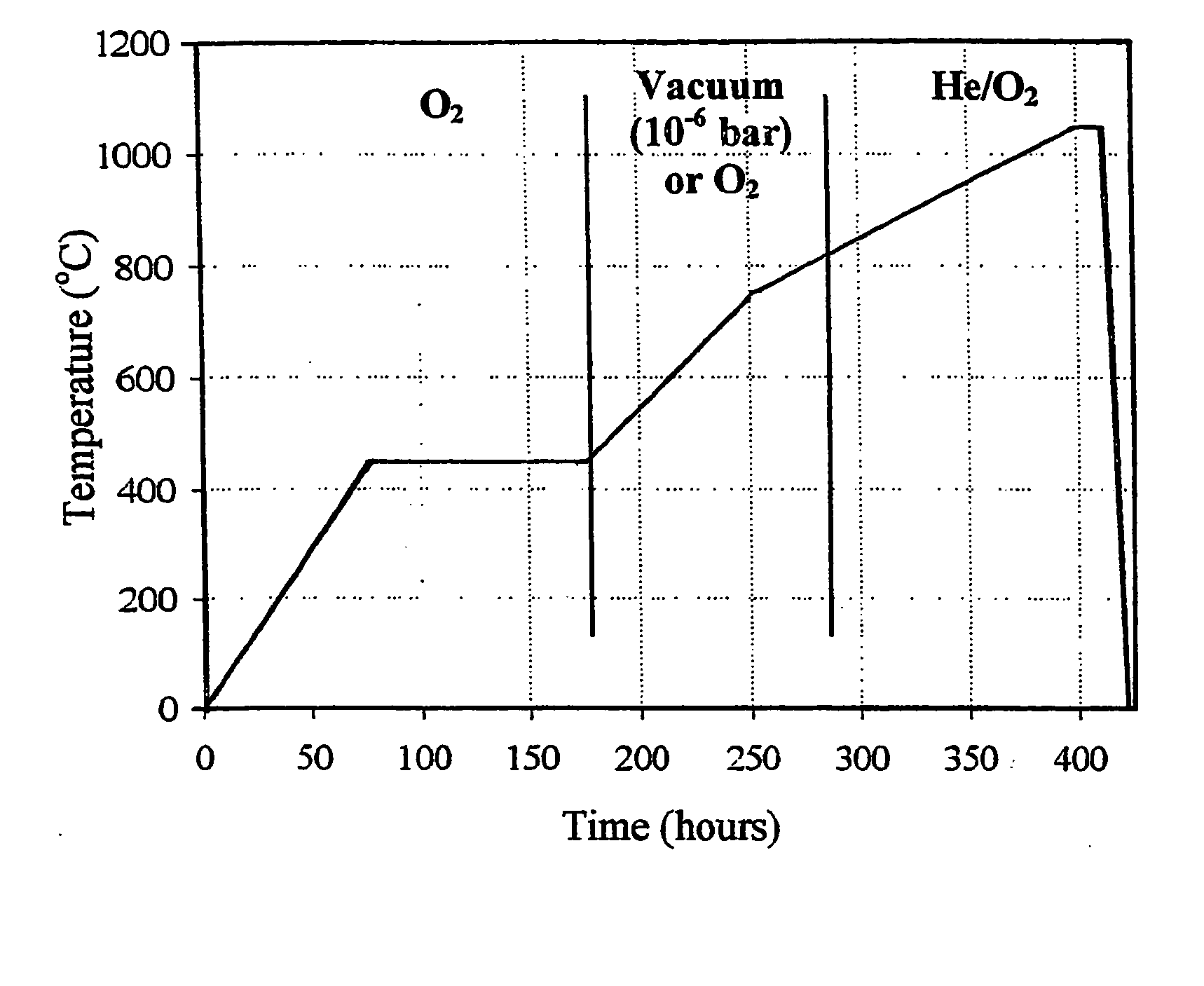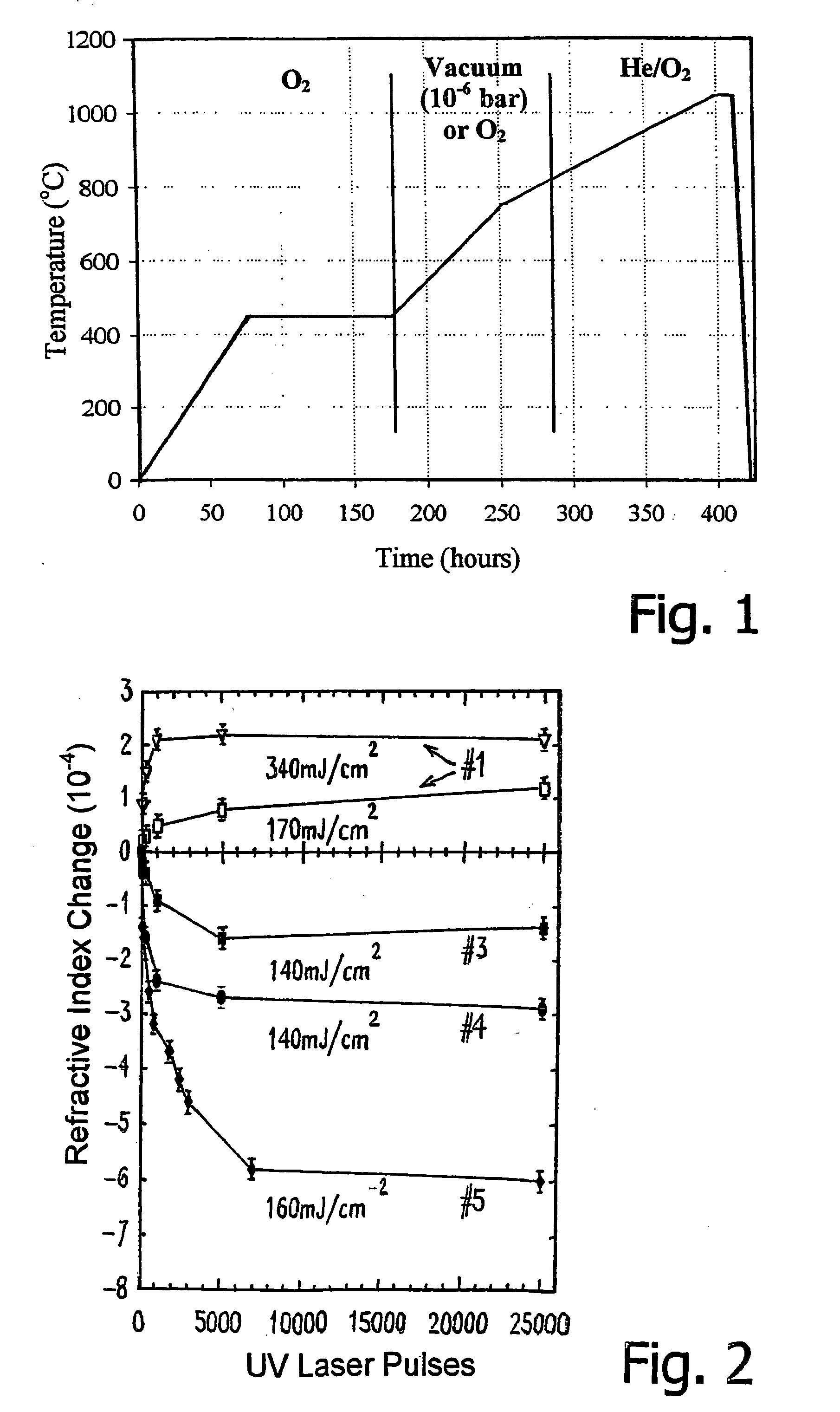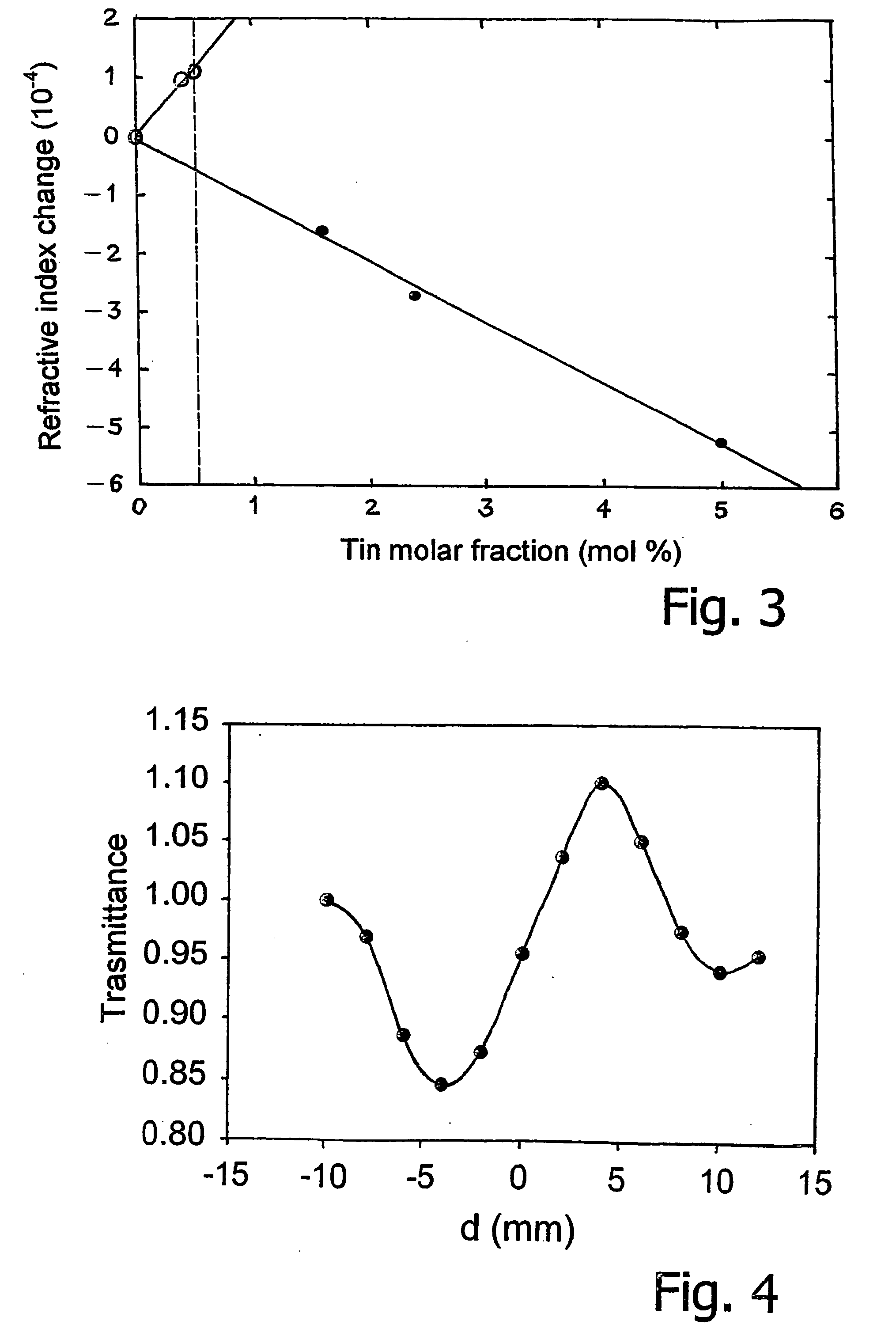Pyroceramic material with a base of silica and tin dioxide, particularly for optical applications, and the corresponding process of fabrication
a technology of pyroceramic materials and tin dioxide, which is applied in the direction of photomechanical treatment originals, instruments, photomechanical equipment, etc., can solve the problems of opaque white ceramic materials, unsuitable optical applications, and marked limitations of doping with tin, so as to improve thermochemical compatibility, improve the effect of thermochemical compatibility, and simplify the process
- Summary
- Abstract
- Description
- Claims
- Application Information
AI Technical Summary
Benefits of technology
Problems solved by technology
Method used
Image
Examples
example 1
[0036] Silica-based materials doped with variable amounts of tin were made, using the basic technique described previously in its broad lines and, in particular, the sintering cycle of FIG. 1. The specimens indicated in Table 1 below were obtained and analyzed.
TABLE 1specimenphysical#SnO2 (ppm)state14000Glass25000Glass316000Pyroceram424000Pyroceram550000Pyroceram6150000Pyroceram
[0037] At low concentrations (specimens 1 and 2), the tin is included in silica in a position substitutional to silicon, in tetrahedral sites, without formation of separate phase, as may be noted from measurements of photoluminescence and electronic paramagnetic resonance and as is, on the other hand, amply known. For high concentrations (specimens 3, 4 and 5) there is, instead, observed the formation of SnO2 crystallites with an average size of approximately 10-15 nm using X-ray diffraction analysis and Raman spectroscopy of the width of the diffraction peaks and of the vibrational modes of the SnO2 phase....
example 2
[0041] The parameters were identified on which it is necessary to intervene for controlling effectively the dimensions of the aggregates of SnO2; namely: [0042] 1) concentration of the tin (in the form SnO2) in the step of sol-gel reaction: there was revealed a relation of proportionality between the concentration of SnO2 and the dimensions of the aggregates; by way of example, in order to obtain aggregates of dimensions of 5 to 15 nm it is possible to work with concentrations of SnO2 of up to over 30 mol %, and in order to obtain aggregates of dimensions smaller than 2.5 nm it is possible to work with concentrations of SnO2 not higher than approximately 5 to 8 mol %; [0043] 2) partial pressure of oxygen (or other gas used) during the sintering step: in this case, the lower the partial pressure, the greater the dimensions of the aggregates; for example, in order to obtain aggregates of dimensions higher than 10 nm it is possible to work under partial pressure lower than 5 mBar, and ...
example 3
[0079] With a procedure similar to those previously illustrated, and with a further variation of the process parameters referred to above, further specimens of materials were prepared having different dimensions of aggregates of SnO2, in particular with average dimensions of some tens of nm (20 to 100 nm). In these materials, the typical optical characteristics tend to worsen considerably, without, however, preventing, in absolute terms, a possible use of the material. Specimens of materials having non-linear properties were prepared, with dimensions of the aggregates of 2.5 nm and smaller.
PUM
| Property | Measurement | Unit |
|---|---|---|
| Bohr radius | aaaaa | aaaaa |
| temperature | aaaaa | aaaaa |
| temperature | aaaaa | aaaaa |
Abstract
Description
Claims
Application Information
 Login to View More
Login to View More - R&D
- Intellectual Property
- Life Sciences
- Materials
- Tech Scout
- Unparalleled Data Quality
- Higher Quality Content
- 60% Fewer Hallucinations
Browse by: Latest US Patents, China's latest patents, Technical Efficacy Thesaurus, Application Domain, Technology Topic, Popular Technical Reports.
© 2025 PatSnap. All rights reserved.Legal|Privacy policy|Modern Slavery Act Transparency Statement|Sitemap|About US| Contact US: help@patsnap.com



